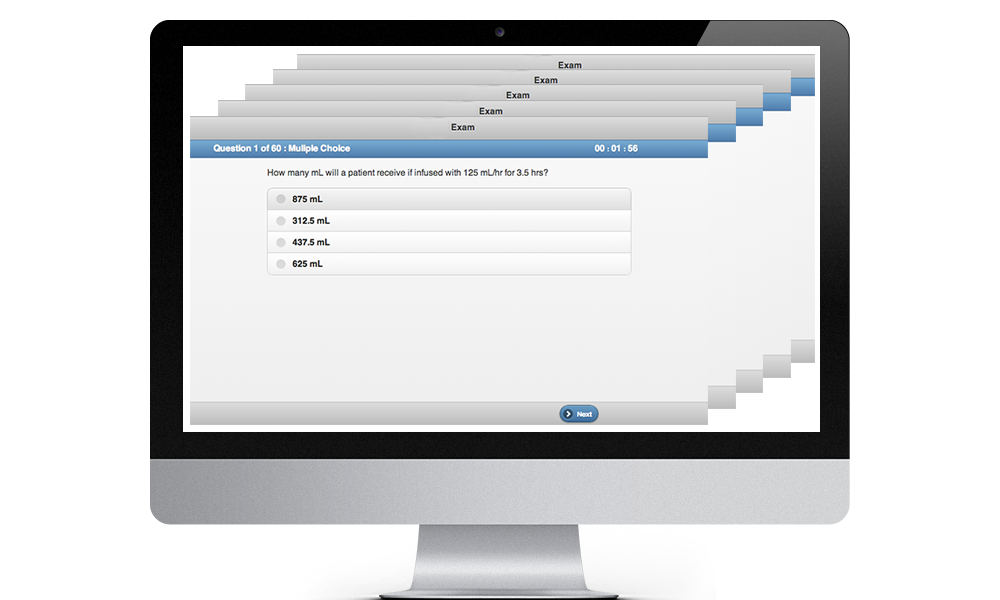PALS Practice Test
Question 1 |
back of their hand. | |
fingertips. | |
cheek. | |
palm of their hand. |
Question 2 |
a cervical spine injury. | |
a thoracic spine injury. | |
an intra-abdominal injury. | |
a head injury with ICP. |
Question 3 |
Fever | |
Respiratory compromise | |
Allergies | |
Neurological Defect |
Question 4 |
to avoid throwing the rhythm into asystole. | |
to limit the strength of the cardiac contraction. | |
to avoid triggering VF. | |
to allow for a stronger myocardial contraction. |
Question 5 |
seizures. | |
atelectasis. | |
neuromuscular disease. | |
hydrocephalus. |
Question 6 |
deliver 1 breath every 12 seconds. | |
deliver 1 breath every 5 seconds. | |
deliver 1 breath every 8 seconds. | |
deliver 1 breath every 3 seconds. |
Question 7 |
Prolonged PR intervals. | |
Tall T waves. | |
A prolonged QT interval. | |
Osborne waves. |
Question 8 |
the provider should look for skin color, assess for temperature, and look for obvious bleeding. | |
the provider should look at the skin color. | |
the provider should look at the skin color and for obvious bleeding. | |
the provider should look for skin color, assess for temperature, determine whether or not a pulse is present, and look for obvious bleeding. |
Question 9 |
glucose should be given buccally. | |
glucose should be given IV. | |
glucose should be administered orally. | |
glucose should be given IM. |
Question 10 |
It can be used in mouth breathers. | |
It helps to keep the mucus membranes moist. | |
It allows for talking and eating. | |
It disallows rebreathing of expired air. |
|
List |
PALS Study Guide
Sign up today for our PALS Practice Test Program and join the thousands of other medical professionals that passed their Pediatric Advanced Life Support certification exam after using our system. Improve your chances of passing the first time to 98.5% with our proven system and our database of 500+ questions.
Our subject matter experts have written questions to mimic the content and test format you will see on the real PALS exam. Take a full-length PALS practice test or focus quiz and track your progress to target weak knowledge areas with our feedback, reporting, and explanations.
With our PALS Practice Test Program, you will have a comprehensive PALS study guide program that lets you study at your own pace with access to our online tools 24/7. You can take unlimited number of PALS practice tests and never see the same test twice. Our tracking system will let you review your progress over time so you can see improvement and know when you are ready for the PALS test.
We’re so confident in our PALS study guide program that we offer a 100% pass guarantee. Click below to take a PALS practice test, sample our proven method of PALS test prep, sign up and join the thousands of other medical professionals that passed their Pediatric Advanced Life Support Exam on their first try.






